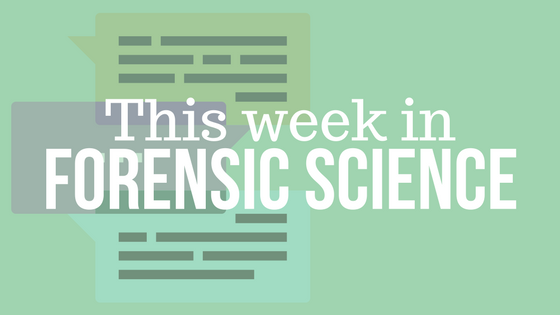No one has hours to scour the papers to keep up with the latest news, so we’ve curated the top news stories in the field of Forensic Science for this week. Here’s what you need to know to get out the door!
Five Surprising Things DNA Has Revealed About our Ancestors (The Conversation – 2/16/2018)
- Rapid advances in genetic sequencing over the past few decades have opened up a whole new window into the past.
DND Looking to Contract DNA and Burial Experts to Help ID Canada’s Missing War Dead (Global News – 2/17/2018)
- The Department of National Defence is seeking forensic DNA experts and funeral organizers to help its efforts to recover, identify and arrange burials for Canada’s nearly 28,000 missing war dead.
Seeing the Unseeable: How Viewing Crime Scene Photos Can Be Beneficial (The Conversation – 2/18/2018)
- Bereaved families are discouraged by police and other personnel from viewing the images associated with the death of their loved one. Relatives applying for access to the material often find themselves making repeated requests but authorities will routinely refuse them on the grounds that the images will cause them distress.
While this gatekeeping is understandable, a number of social workers are advocating for families to be given a choice to access and view the archived material.
Familial Searching DNA Tests Challenged in New York by Legal Aid Society (Forensic Magazine – 2/20/2018)
The Legal Aid Society and the firm Gibson Dunn contend the Commission and the New York Department of Criminal Justice Services exceeded their authority in approving the use of the DNA searched.
A Wrenching Dilemma (The Washington Post – 2/20/2018)
- Today, the Justice Department recommends that all rape kits associated with a reported crime be submitted for DNA analysis. But up until just last year, there were no national requirements or guidelines on what to do with them. Most states had no laws dictating which kits should be tested, meaning every police department could have its own rules about what evidence to test, keep or throw away.
French WWI Soldier Identified by DNA to be Laid to Rest (Phys Org – 2/21/2018)
- Sergeant Claude Fournier is the first French soldier who died in World War I to be identified by DNA analysis—a process already used by Britain to identify 10 servicemen in 2014.
Ancient DNA Tells Tales of Humans’ Migration History (Howard Hughes Medical Institute – 2/21/2018)
- Fueled by advances in analyzing DNA from the bones of ancient humans, scientists have dramatically expanded the number of samples studied – revealing vast and surprising migrations and genetic mixing of populations in our prehistoric past.
AAFS 2018: Deputy AG Rosenstein Announces New Federal Forensic Initiatives (Forensic Magazine – 2/21/2018)
- The Department of Justice is proceeding with a series of initiatives to improve the empirical foundations of forensic sciences, Rosenstein told the AAFS membership in the biggest meeting of the week-long conference in Seattle.
Ancient-DNA Researchers Surpass the 1,000-Genome Milestone (Science Daily – 2/21/2018)
- In the last eight years, the field of ancient DNA research has expanded from just one ancient human genome to more than 1,300. The latest 625 of those genomes debut Feb. 21 in Nature, including the largest study of ancient DNA to date.
New Technique That Identifies Fingerprints on a Fired Bullet With 68% Accuracy Could Shed New Light on Thousands of Cold Cases (DailyMail – 2/22/2018)
- Scientists in Bristol have developed a ground-breaking forensic technology that allows fingerprints to be obtained from bullets for the first time.
Courting Change: A Fresh Take on DNA Profiling (The Wire – 2/23/2018)
- Y chromosome profiling, important in sexual assault cases, can often be presented incorrectly in court. New math could help by taking the ambiguity out of the equation.
WOULD YOU LIKE TO SEE MORE ARTICLES LIKE THIS? SUBSCRIBE TO THE ISHI BLOG BELOW!


